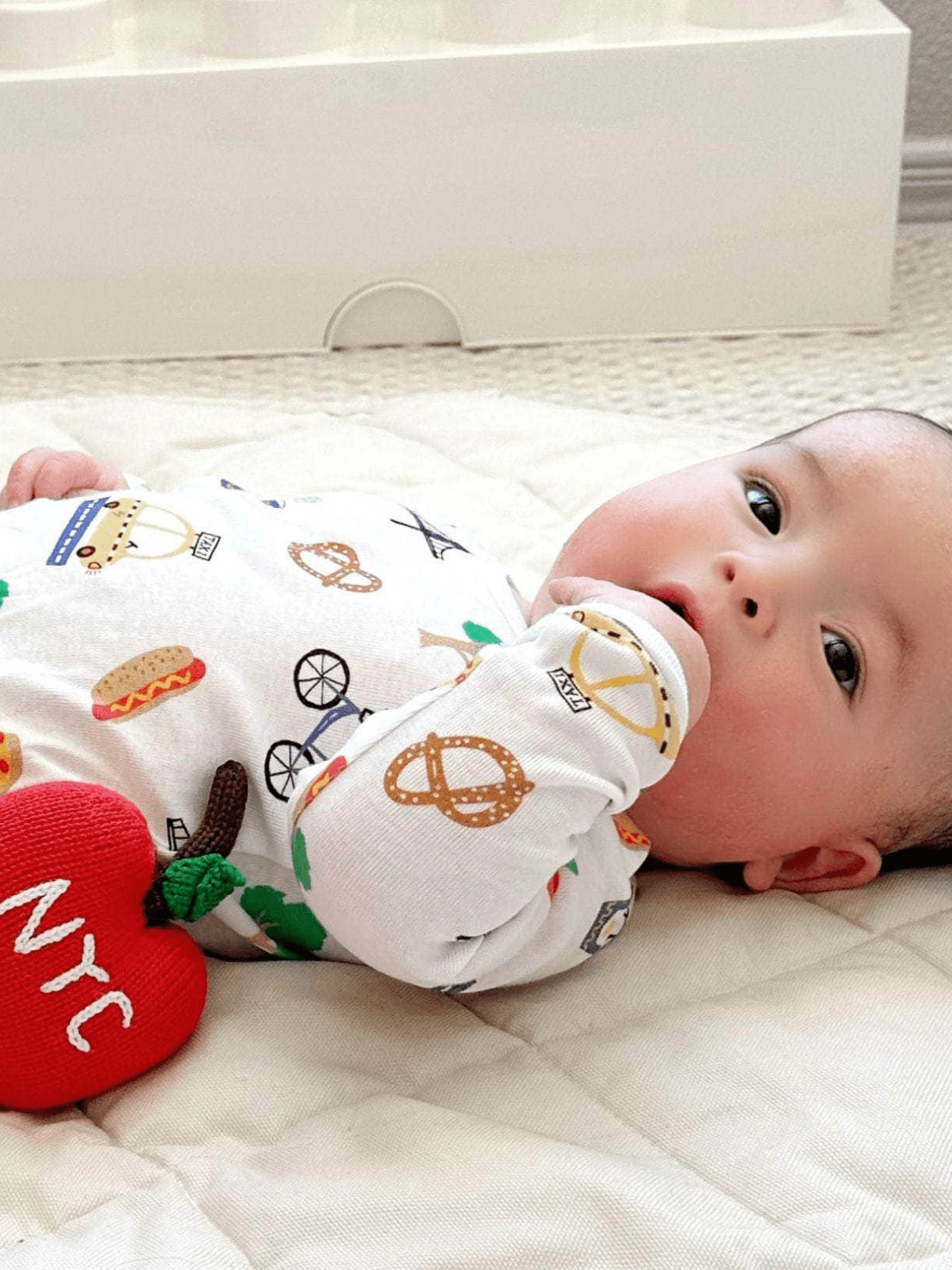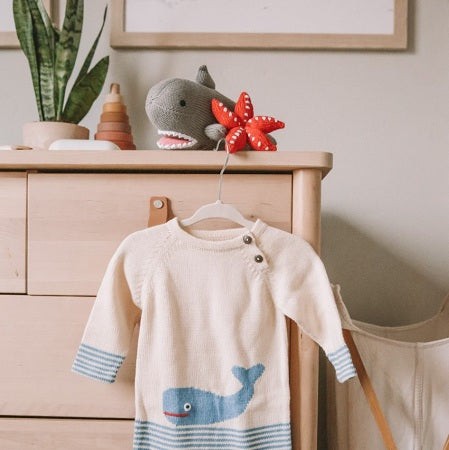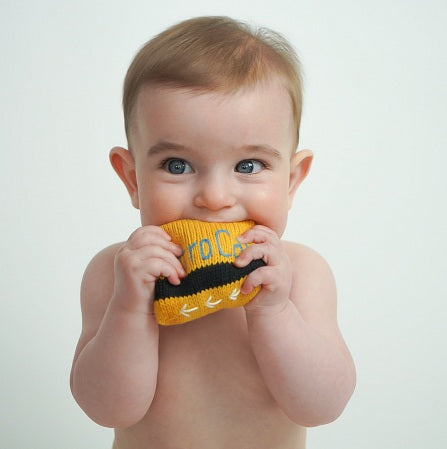When preparing your baby's closet, knowing how many baby clothes you need can be overwhelming. From newborn essentials to seasonal must-haves, building a baby’s wardrobe requires a balance of practicality, comfort, flexibility and style of course. This article covers everything from newborn basics to seasonal items, how to organize clothes, and tips for predicting your baby’s growth. Are you ready? Let’s get started!
Everything You Need for a Baby's Closet
When preparing your baby's closet, it's essential to stock up on practical yet comfortable baby clothes to keep your little one cozy and well-dressed. Start with basics like onesies and bodysuits, which are everyday staples. Choose soft, breathable fabrics like cotton to prevent irritation. Sleepers or footed pajamas are great for bedtime, keeping the baby warm. You'll also need a mix of pants, leggings, and sweaters for layering, especially in cooler weather. Don't forget socks, mittens, and hats to protect the baby’s extremities.
A few swaddles or blankets are helpful for warmth and comfort—choose the perfect blanket size to ensure maximum coziness and ease of use, whether for swaddling or snuggling. Lastly, include a couple of special outfits for family photos or outings. Keep in mind that babies grow quickly, so it's wise to buy a variety of sizes. Simple, easy-to-change outfits are your best bet, as newborns require frequent changing.
Clothing for Newborns
Remember to prioritize comfort and practicality when building a wardrobe for your newborn. Essential baby registry items to put on your list include soft, breathable fabrics like cotton for onesies, bodysuits, and sleepers that are gentle on a newborn’s sensitive skin. Footed pajamas are excellent for nighttime warmth, while hats, mittens, and socks help regulate body temperature, especially during cooler months. Simple, easy-to-change outfits are ideal, as newborns need frequent diaper changes. Since babies grow rapidly, it's wise to register for a range of sizes to keep up with their changing needs.
0–3 Months Size of Clothes
Clothing in the 0–3 months size is designed to fit newborns up to about 12 pounds. These clothes are typically soft and stretchy, ensuring comfort and ease of movement. Essentials like onesies, sleepers, and footed pajamas are common in this size and allow for easy diaper changes. Babies grow quickly during these months, so it's helpful to have a variety of sizes ready in case they outgrow clothes sooner than expected. Always choose soft, breathable fabrics like cotton to protect their delicate skin.
3-6 Months Size of Clothes
The 3–6 months size of clothes is designed for babies weighing around 12 to 17 pounds. At this stage, babies are more active, so clothes that allow for movement and comfort are ideal. Essentials include baby onesies, sleepers, and pants for easy layering and diaper changes. As babies begin rolling or sitting up, consider clothes with durable seams and snaps. This size range also makes for a useful gift idea, as it prepares parents for the next growth phase. Keeping a mix of sizes is essential to keep up with growth spurts, making versatile clothing sizes among the best gifts for 1-year-olds, who may still be wearing these adaptable items as they develop.
6-12 Months Size of Clothes
Clothes in the 6-9 months size are made for babies weighing between 17 and 21 pounds. At this stage, babies are more mobile—rolling, crawling, and starting to sit up—so their clothing should be flexible and durable. Soft, stretchy fabrics like cotton are still important for comfort, while outfits with reinforced knees or bottoms can handle more active movement. Essentials include onesies, pants, and footed pajamas. As babies explore more, consider clothing with easy-to-open snaps or zippers for quick changes. Clothing in this size is a smart gift choice for showers, too, as it prepares parents for the baby’s next growth stage and active milestones, making it among the best baby shower gifts.
Considerations for Seasonal Baby Clothes
Choosing the right seasonal clothes for your baby is essential to keep them comfortable and protected throughout the year.
In Colder Months:
- Layer up: Start with onesies or bodysuits as a base layer, then add sweaters or jackets for extra warmth.
- Footed pajamas or fleece sleepers: Perfect for keeping your baby warm at night.
- Accessories: Don’t forget baby hats, mittens, and warm socks to help regulate your baby’s body temperature.
- Outing essentials: Bundle your baby in a cozy blanket or use a well-insulated stroller cover to protect them from the cold.
In Warmer Weather:
- Breathable fabrics: Choose lightweight, breathable materials like cotton or muslin to prevent overheating.
- Cool outfits: Short-sleeved onesies, rompers, and loose-fitting pants help keep your baby cool.
- Sun protection: A wide-brimmed sun hat shields your baby from the sun during outdoor time.
- Indoor comfort: Keep a light blanket handy for cooler indoor spaces.
Regardless of the season, having versatile pieces on hand will help you easily adjust your baby’s clothing as the temperature fluctuates throughout the day.
Related: Top 5 Must-Have Holiday Gifts for Young Children
Building Your Baby's Wardrobe
Keep Organized
Baby clothes are adorable but can be easily misplaced due to their small size. To stay organized, sorting clothing by size is one of the most efficient methods. This way, you can easily see what fits your baby now and what will be needed as they grow into the next size.
Using a dresser for storage? Drawer dividers are essential for keeping everything neatly separated, whether by clothing type, size, or any other system you prefer. They're especially useful for smaller items, like socks, that can easily get lost.
For closet storage, closet dividers are a game-changer. These handy tools allow you to sort clothes by size, such as from newborn to 2T, making it easy to access items and ensuring that clothes don’t get overlooked. Regularly going through outgrown clothes and storing or donating them can also help keep your baby’s wardrobe organized and make room for new items as they grow.
Consider Infant Apparel Sizes
Choosing the right sizes and determining how many items to add to your registry can be challenging, especially since it’s hard to predict your baby’s birth size and how quickly they’ll grow. Here are some helpful tips:
- Go for Variety in Size: Most newborn clothes are designed for babies up to about eight pounds. If your baby is expected to be larger, they might start in 0-3 month sizes right away. If they’re smaller, they’ll likely only fit into newborn sizes for a short time. It's smart to pick a few newborn items but focus mostly on 0-3 months, as those clothes will fit babies up to about 12 or 13 pounds.
- Consider different brands: Sizing can vary significantly between brands. Some offer roomier fits, ideal for larger babies, while others are cut narrower and work better for babies who are tall and slim. Since you can’t know your baby’s build in advance, it’s wise to include clothes from a variety of brands to ensure a range of fit options.
Consider Laundry
Baby clothes are adorable but can easily be misplaced due to their small size. To stay organized, sorting clothing by size is an effective method, allowing you to quickly see what fits your baby and what will be needed as they grow. Drawer dividers are essential for keeping items separated in a dresser, especially for smaller items like socks, while closet dividers help sort clothes by size for easy access and prevent overlooked pieces. Regularly going through outgrown clothes to store or donate them will also keep your baby’s wardrobe manageable and free up space for new items as they grow.
Estella's Picks for Your Baby's Wardrobe
Now that you have an idea of how many clothes you need, Estella has come up with its own list of baby clothes you can get for your bundle of joy today.
10-14 Pajamas
This follows the same pattern of thought as the need for 14 full daytime outfits, especially in the first few months when late night feedings are common and schedules are erratic.
Make sure you’re considering pajamas based on the expected weather. Fleece is great for cold-weather or cooler-homes, especially since newborns shouldn’t be left with blankets, and breathable cotton is great for summer.
1-2 Sweaters and 1 Coat
This will depend on the weather where you live; a baby who is born in May in Florida wouldn’t need a heavy coat until November at the earliest.
While you’ll be keeping newborns wrapped up in blankets and swaddles, appropriate outerwear is important, especially as your child gets older. Have sweaters for them if needed, and a heavy coat for children who won’t be in a carrier with blankets the entire time during cold weather.
5 Pairs of Pants
Assuming that your baby is wearing onesies, having a few pairs of pants on hand that you can pull over their legs if it gets chilly can be a lifesaver. If your baby runs cold or you use almost entirely onesies instead of bodysuits or rompers, you may want to consider purchasing a few more.
7 Pairs of Socks
You want to have enough pairs of socks to take your baby out at least once daily if needed. These will keep their feet warm and clean, which can be important when you’re not using footie pajamas and rompers.
1 Cold Weather Hat, and 1 Sunhat
Babies are extremely sensitive, so having the right clothes on hand can protect them.
A cap to keep their head warm is important (and will often be used in the hospital and even at home), but you’ll also want a sunhat for when your baby is old enough to start enjoying time outside.
Conclusion
When building your baby's wardrobe, it's essential to plan for both comfort and practicality, ensuring that clothes fit well, are easy to put on, and are appropriate for the season. Babies grow quickly, so having a variety of sizes and versatile clothing will ensure they’re always dressed comfortably. Organizing clothes by size and regularly assessing what fits will help keep your baby’s closet manageable and ready for each growth stage. Additionally, how often you do laundry will impact how many clothes you'll need, so adjusting your wardrobe accordingly will help keep things running smoothly.






Leave a comment
This site is protected by hCaptcha and the hCaptcha Privacy Policy and Terms of Service apply.